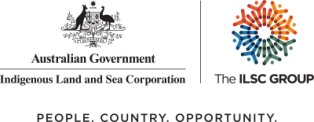WITH a long stretch of coastline and perched in a corner of Bruny Island, Murrayfield Station is a Merino lamb and wool operation that successfully maintains indigenous heritage.

Murrayfield was purchased in 2001 by the Indigenous Land Corporation in recognition of its cultural and environmental significance to the Tasmanian Aboriginal community.
The 4100ha property was granted to weetapoona Aboriginal Corporation in July 2016. The ILC’s agricultural subsidiary, Australian Indigenous Agribusiness Company, subleases the property and operates it as a Merino lamb and wool enterprise.
AIA employs seven people at the station and three identify as being of Aboriginal descent.
ILC Group chief executive John Maher said the farm produced fine to medium Merino wool under the Responsible Wool Standards guidelines. This covers all management practices relating to wool production, with an emphasis on animal welfare and environmental management.
“Murrayfield is an important partnership with indigenous landholders, it demonstrates the ability to operate a commercial business and still protect the values of the environment and indigenous cultural heritage,” Mr Maher said.
Murrayfield manager Bruce Michael said the farm was a great place to
grow wool.
Murrayfield has a flock of about 10,600 producing fine wool, with a micron count in the mid-16s for younger sheep and 18.2 for older.
The flock is made up of 3400 breeding ewes, 3300 hoggets and weaners and 4000 wethers across about 85 paddocks.
The farm shears ewes in January and wethers are shorn every eight months.
Helping to manage the flock are six sheepdogs, which are of mainly Kelpie breed with a dash of Smithfield.
“We have an A-team of dogs and a B-team,” Mr Michael said.
“We have small flock of about 350 stud Merino ewes for our use. It’s a way of securing our flock, and the stud is linked with Merino Select, so we can use the estimated breeding values data.”
Mr Michael said the property had enjoyed a great summer with above-average rainfall.
“The rain was good because I love growing grass as much as I love growing wool, I like to give new plant species a try.”
He said the general market outlook for wool was strong and the property was building up its market outlets, especially now it is accredited with Responsible Wool Standard.
“Going through the RWS process has been interesting. The full wool chain is audited to give consumers confidence.”
Working with Australian owned and operated manufacturer of Merino activewear and outdoor clothing Bluey Merino, a range of garments are being made with wool from Murrayfield.
“The first batch of Murrayfield garments, beanies, have just been released and will be at Agfest on the Bluey Merino stall,” Mr Michael said.
He said Bluey Merino was investing heavily in local manufacturing and working directly with growers.
Bruny Island and Murrayfield is an important place for Aboriginal Tasmanians. Archaeological sites show that the 14km coastline, wetlands and forests of the property supplied an abundance of food, tools, ochre and sheltered living sites.
The ILC’s purchase of Murrayfield enabled the protection and registration of almost 300 sites of Aboriginal heritage on the property.
The ILC is a corporate entity of the Commonwealth.
Murrayfield also provides crucial habitat for a number of endangered animal species, including swift parrot, forty-spotted pardalote and eastern quoll and the property has hosted university researchers studying them.
The ILC and wAC have worked with various agencies in land-management activities such as revegetation and fencing to help protect these species.
“I love this place, it’s unique, a fantastic place to live and Bruny Island people are fantastic,” Mr Michael said.
“Working with indigenous people and the environment is wonderful. The farm shows people we can run a commercial enterprise and still look after indigenous heritage.
“We get about 2000 visitors a year to the property.”
Truganini, once incorrectly referred to as the last Tasmanian Aborigine, was born on the island and is reported to have lived at Murrayfield. The farm is also the site of George Augustus Robinson’s ill-fated 1829 mission to establish dialogue with the Aborigines.
Story courtesy of Roger Hanson, Tasmanian Country

